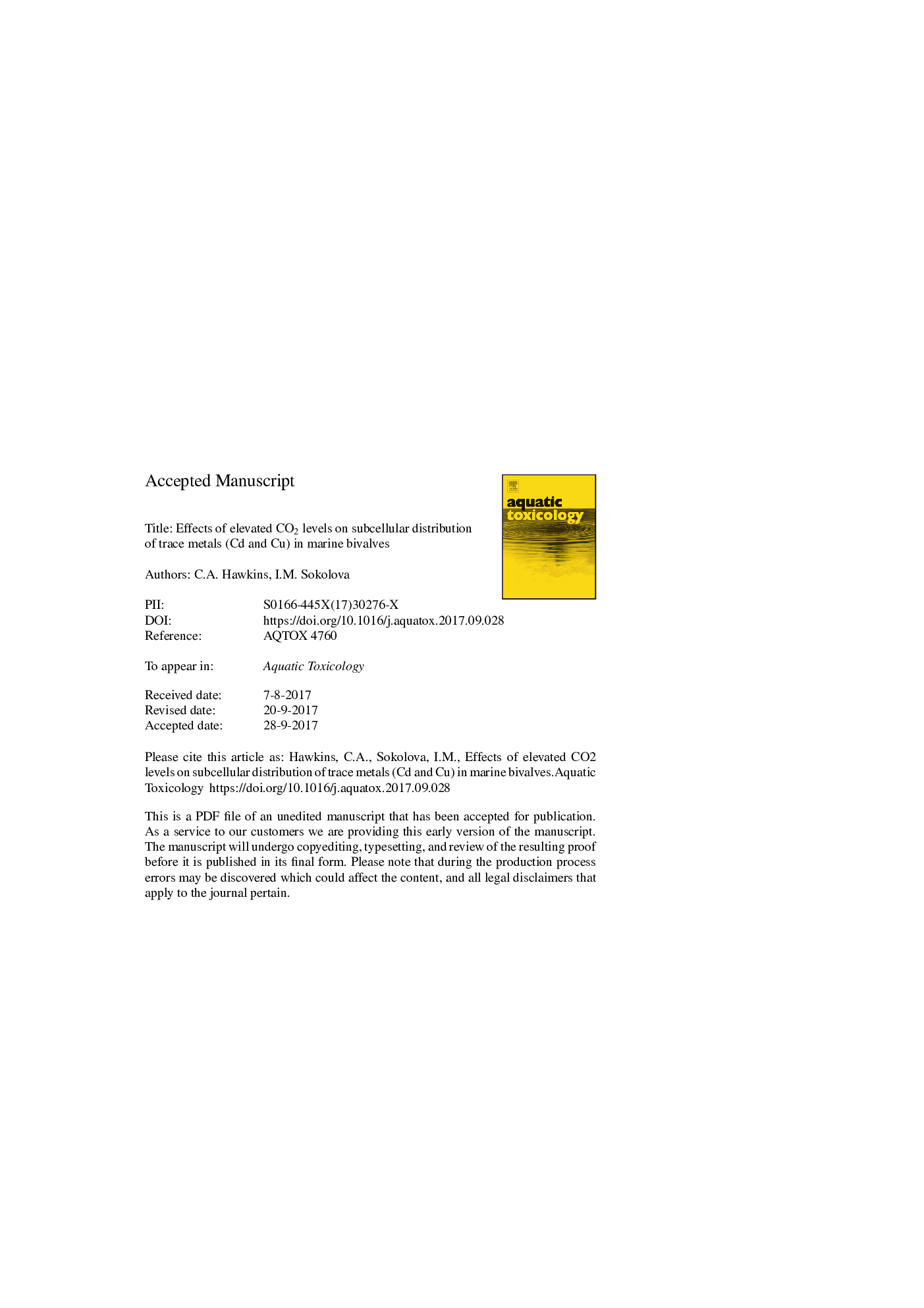| کد مقاله | کد نشریه | سال انتشار | مقاله انگلیسی | نسخه تمام متن |
|---|---|---|---|---|
| 5764143 | 1625913 | 2017 | 33 صفحه PDF | دانلود رایگان |
عنوان انگلیسی مقاله ISI
Effects of elevated CO2 levels on subcellular distribution of trace metals (Cd and Cu) in marine bivalves
دانلود مقاله + سفارش ترجمه
دانلود مقاله ISI انگلیسی
رایگان برای ایرانیان
کلمات کلیدی
موضوعات مرتبط
علوم زیستی و بیوفناوری
علوم کشاورزی و بیولوژیک
علوم آبزیان
پیش نمایش صفحه اول مقاله

چکیده انگلیسی
Hypercapnia (elevated CO2 levels) and pollution with trace metals such as Cu and Cd are common stressors in estuarine habitats that can negatively affect physiology and health of marine organisms. Hypercapnia can modulate toxicity of trace metals including Cu and Cd; however, the physiological and cellular mechanisms of the metal-CO2 interactions are not well understood. We investigated the effects of elevated PCO2 (â¼800 and 2000 μatm) and metal exposure (50 μg lâ1 of Cu or Cd) on subcellular distribution of metals in two common species of marine bivalves, Eastern oysters Crassostrea virginica and hard shell clams Mercenaria mercenaria. Oysters accumulated higher burdens of Cu and Cd in the gill tissues compared to clams. In both studied species, Cu was predominantly associated with the metabolically active cell compartments (mitochondria, lysosomes, microsomes and cytosolic enzymes), with a modest fraction sequestered by metallothioneins (â¼30%) and the insoluble metal-containing granules (MCG) (â¼15-20%). Unlike Cu, Cd was largely sequestered by metallothioneins (â¼60-70%), with a relatively small fraction associated with the organelles and the cytosolic enzymes. Mitochondria were the main intracellular target for trace metals accumulating higher concentrations of Cd (and in the case of oysters - of Cu) than other organelles or cytosolic enzymes. Cu accumulation in the metabolically active cellular compartments was independent of the CO2 levels, while Cd content of the organelles and cytosolic enzymes increased at elevated PCO2 in both studied species indicating that hypercapnia may enhance cellular toxicity of Cd in bivalves. Hypercapnia suppressed the sequestration capacity of metallothioneins for Cu and Cd in oysters but increased Cu and Cd load in clam metallothioneins. Thus, metal-induced metabolic injury in oysters may be exaggerated by hypercapnia which enhances metal accumulation in the potentially sensitive intracellular fractions and suppresses the metal detoxification capacity. In contrast, clams appear to be more resistant to the combined effects of hypercapnia and metal exposure reflecting more efficient and robust detoxification mechanisms of this species.
ناشر
Database: Elsevier - ScienceDirect (ساینس دایرکت)
Journal: Aquatic Toxicology - Volume 192, November 2017, Pages 251-264
Journal: Aquatic Toxicology - Volume 192, November 2017, Pages 251-264
نویسندگان
C.A. Hawkins, I.M. Sokolova,